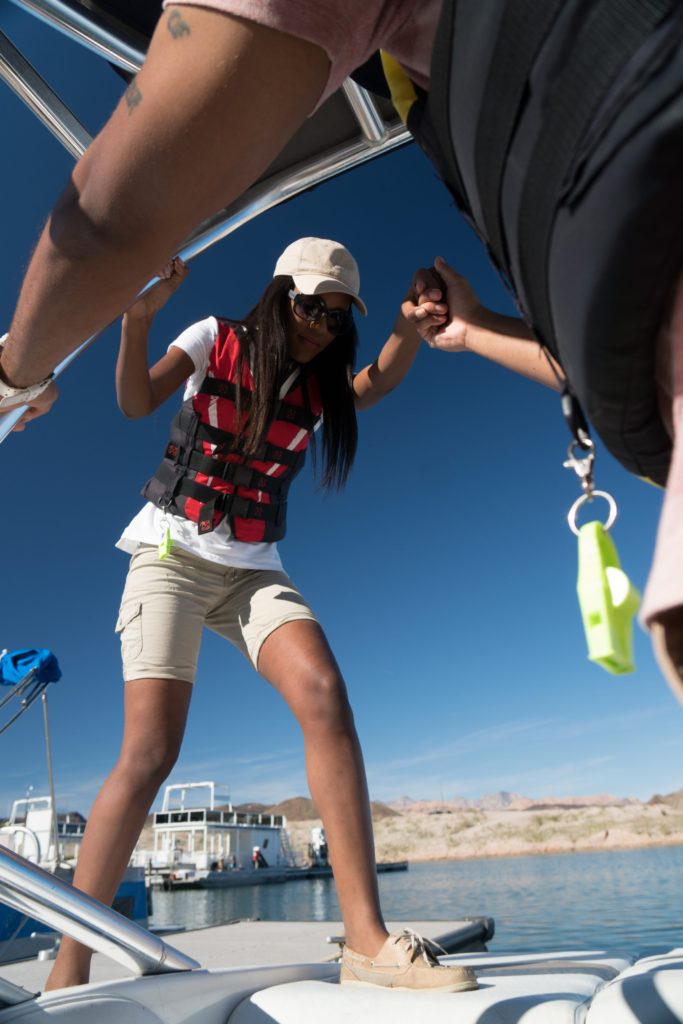Once upon a time, our feet were swaddled in thermal socks and enclosed in waterproof boots. Though ready to be set free, feet still need a few boundaries to keep them safe from slipping, sun, heat, boardwalks, and infections living in damp places.
Backless slip-ons, sneakers with slippery bottoms, and flip-flops all have drawbacks as boating attire. Such footwear can fly off (or get caught while coming aboard) and they don’t offer the kind of grip you need when traversing a steep boat ramp or a

gunwale. There’s also something quite unpleasant about stomping around for hours in soaking wet shoes (which are also a breeding ground for foot fungus).
On the other hand (sorry), boat shoes are actually designed for a boater’s needs. The best pairs don’t slip along a wet walkway or on a damp deck. They shouldn’t pick up rocks or sand, they must never scuff the deck, and quick drying is a fine feature as well. Shoes should be flexible, not stiff — many boaters jump on, off, and around during a boating day.
If you’re piloting the vessel or sitting by for hours during a leisurely cruise, the American Podiatric Medical Association (APMA) wants you not to forget about your feet. Keep blood flowing with periodic ankle flexes, toe wiggles, and calf stretches.
Drinking plenty of water throughout the day has health benefits galore. When it comes down to feet, staying hydrated minimizes foot swelling caused by the heat.
Apply sunscreen as diligently to your feet as the rest of your body, including between toes, on the soles, and the tops and fronts of ankles. Reapply after two hours or once you’ve been in the water.
“Even if you are just lying still on your back soaking up the rays, your feet are still vulnerable,” says APMA member Jane Andersen, DPM. “You can seriously sunburn your feet.”
Avoid walking barefoot around the marina — if you’re inclined to take a dip in the pool, wear pool shoes instead, says Dr. Andersen. This avoids injury to the foot as well the lurking threat of bacterial infections in even the most upscale marina’s pool. The same holds true when you’re aboard. While wiggling your toes and soaking up the sun are sublime, there’s nothing pleasant about stepping barefoot onto a scalding deck or having a toe catch in a cleat.
If you injure a foot or ankle while away from your home port, the APMA advises you to seek a podiatric physician to keep your ailment from growing worse. This is especially important for diabetics, those with cardiovascular conditions, and pre-existing podiatric concerns. The association’s site has a Find a Podiatrist tool: https://www.apma.org/Directory/FindAPodiatrist.cfm?navItemNumber=26113




